Women Preserve Treasures with Craftsmanship in Palace Museum
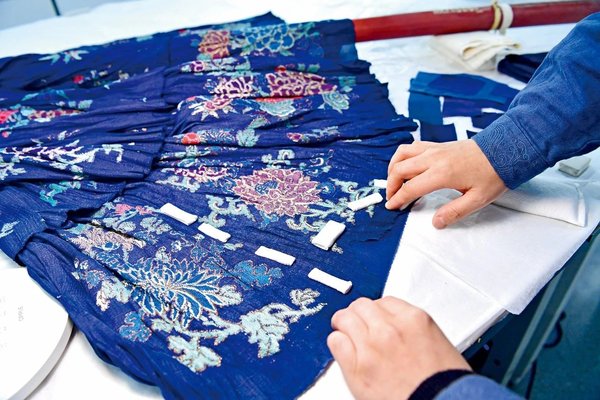
Where is China's largest cultural relics conservation institution? That agency — the cultural relics conservation and restoration department of the Palace Museum — is located in Beijing, in the western section of the Forbidden City. The department is also referred to as the "cultural relics' hospital." In recent years, women "doctors" have become the backbone of the "hospital," and the younger generation of "doctors" has injected new vitality into the conservation of cultural relics. The restorers have devoted themselves to protecting — and passing down — the treasures of the Chinese civilization.
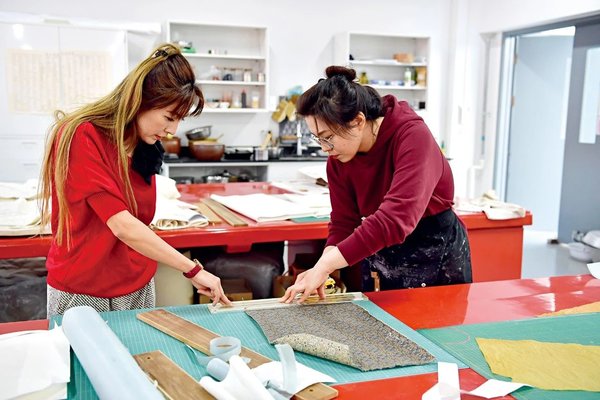
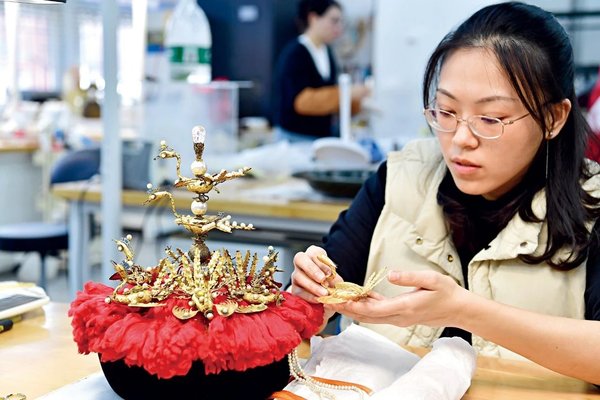
Improving, by Learning
Gong Tianshu, a member of the department's inlaying team, has spent several months repairing a crown, used by an emperor's concubine, dating back to the late Qing Dynasty (1616-1911). The crown had been sent to the team because its base was badly deformed, and the gold foils, which covered the bird decorations on the crown, had fallen off. Gong restored the antique, with patience and exquisite craftsmanship. To understand how the crown had been produced, and how it had been damaged, Gong researched the techniques used to create each part of the crown. She then produced a replica of the crown, by making copies of each part, and then piecing each together.
Gong, who was born during the 1990s, has been a member of the team for five years. In 2016, she watched Masters in Forbidden City, the popular documentary about repairing cultural relics in the Palace Museum. That ignited her dream of becoming a restorer. "Then, I watched several TV programs on this topic, such as National Treasure, and I knew some graduates from my college had become engaged in restoring cultural relics. So, I decided to apply to become a restorer in the Palace Museum after graduation," says Gong.
Like Gong, many women college graduates have chosen to join the "hospital" in recent years. "Most of our new members are women, and women account for 80 percent of all restorers in the 'hospital.' Several teams have highly capable women heads," says Qu Feng, the department's director.
To become a qualified restorer, one must first devote himself or herself to learning. "Normally, a restorer is not allowed to repair relics on his/her own until he/she has worked here for three years. Learning is important for novices," Cui Zheng, head of the department's embroidery team, says.
Young restorers, who majored in textile engineering or costume design, have certain knowledge about textiles, but they have few opportunities to touch the cultural relics, Cui says. They must first learn, from scratch, during their early years in the "hospital," and they must remain focused on what they are learning — with a new vision, she adds. They are allowed to begin repairing relics only after they have gained command of the fundamental concepts and techniques used during restoration, she says.
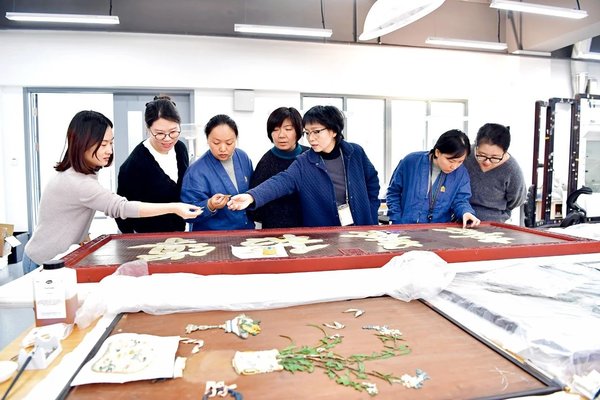
Receiving guidance from experienced restorers is essential for novices in the relic-restoration industry, especially for those whose job is to mount and frame painting/calligraphy works.
The department has promoted the development of mounting and repairing techniques by letting young restorers work under the mentorship of senior colleagues.
Wang Xinyi, a member of the department's painting and calligraphy mounting team, is an apprentice of Wang Hongmei, a third-generation inheritor of the traditional mounting techniques.
To mount a painting or calligraphy, restorers need to prepare some silk to make tianditou first. Tiantou and ditou, usually two pieces of blank silk, are the major components used to mount a work. They are pasted on the two ends of the original work, and their sizes must perfectly match the work.
When Wang Xinyi makes tianditou, Wang Hongmei often stands beside her, to help her when necessary, to ensure she does not make a mistake. The master and apprentice understand each other's intentions, through simple movements or even the expressions in their eyes.
A museum is like a university. When young restorers meet problems, they learn how to solve the issues by reading books, or by consulting senior restorers. In this way, they acquire knowledge, and they continue improving.
Senior restorers' guidance, sometimes involving small details, helps the younger members improve as restorers. Kong Yanju is head of the department's inlaying team. When the team repaired a plaque from Ningshou Palace, Kong noticed the tortoise-shell patterns on the original mother-of-pearl inlays. She suggested her team draw the patterns with pencils, and then carve the patterns accurately on the new inlays used to repair the plaque.
Zhan Fei, a member of Kong's team, said they repaired a hanging screen, inlaid with feathers of various kinds of birds. "To ensure the feathers used to repair the screen looked real, Kong bought a book, about birds in China, for us to study. For the conservation of some kinds of birds, we now use feathers of other birds instead," she says.
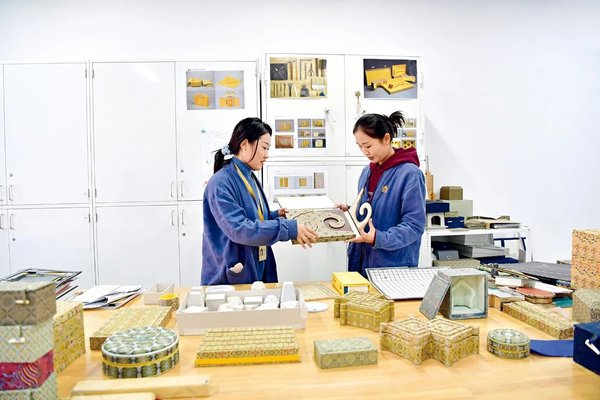
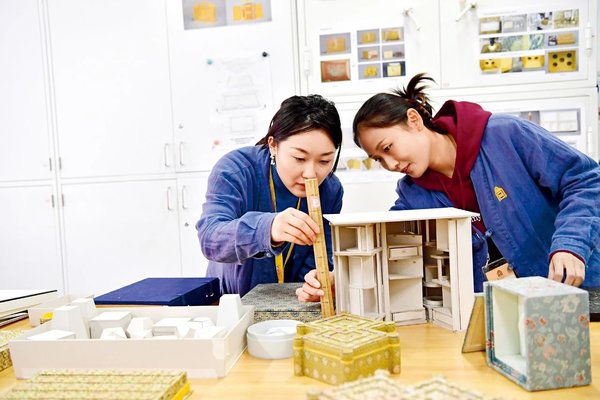
Innovation and Dissemination
Special containers help protect the cultural relics. In 2021, the technique used to produce the cases, which are used to protect relics in the royal court, was added to the list of China's national intangible cultural heritage.
Members of the "relics' hospital" case-production team design and produce various cases, in different shapes and sizes. The frames of the cases are made from cardboard, and they are covered with silk. Paper, cotton and/or silk bags are placed in the cases to protect the relics.
In addition to the traditional patterns and techniques, modern technologies are continuously being integrated into the production of the cases.
Zhang Jingjing, head of the case-production team, says the team has innovated the structural design of the traditional cases. The team, she adds, has started using new materials, such as acid-free paper, in the production of the cases.
Zhang's team has been teaching the public about the production of the cases. The team has provided demonstration seminars in high schools, showing the students how to make the cases. Also, the team has taught the case-making techniques during social-practice courses at Beijing Forestry University, and at other colleges.
When asked if the restorers show an interest in containers used in their daily lives, Liu Tianqi, a member of the team, said she has paid attention to interesting designs of some gift boxes.
She believes, with basic knowledge and creative ideas, everyone can bring new life to old containers. She has watched, on social media, many people explaining how they have transformed a package box into a jewelry box.
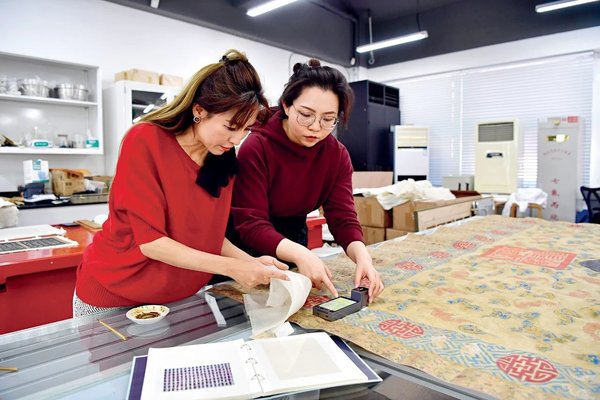
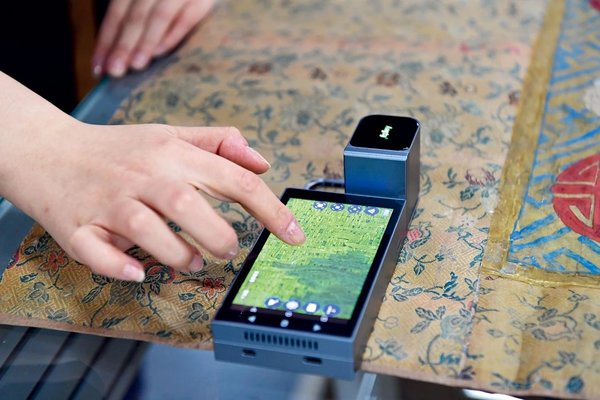
Technology-Empowered Conservation
Various devices, such as microscopes and spectrophotometers, have become an indispensable part of the restorers' work. When Wang Xu, a member of the embroidery team, repaired a sangai (big umbrella with fringes and delicate decorations), which dated back to the Qing Dynasty, she took photos of the embroidered flower patterns. Then, she printed the pictures. During careful comparison, she discovered, from the photos, there were very subtle differences — in the colors and shapes — of the flowers.
Wang Xu had to use a portable spectrophotometer to calculate the exact value of each pattern's color. "Although, using the device, I had to do more work than before, it was worthwhile. The device enables us to learn about the treasures in a more accurate way, before we repair them. Technologies help improve our work," she says.
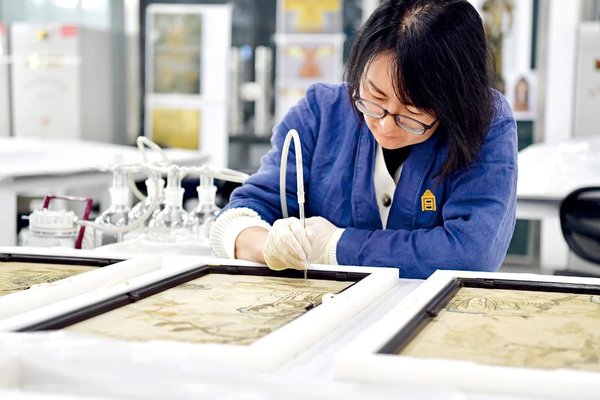

Wang Hongmei and Wang Xinyi use portable microscopes to check the structures of fibers. Ma Yue, the mounting team's head, says, "Traditional paintings and calligraphies were created on Xuan paper (a type of handmade paper from China) or silk. It is easy to see clearly the size and number of fibers and threads in a piece of paper or silk with a microscope." After analyzing the original material, used in a painting or calligraphy, the restorers choose the same or similar material to repair the work. Using the right material lays a good foundation for the subsequent steps in the restoration process.
Modern devices provide restorers with diverse angles of observation, and also with methods for in-depth analysis. In fact, the devices are now being used in every step of a restoration.
The mounting team has a big glass table, and that table has a sliding rail. Restorers use the rail to reach the middle section of a large painting. They have to sit on their knees, and they have to maintain their balance to ensure the painting will not be damaged. Restoration of a large painting requires the restorers to have great patience and excellent techniques.
Cleaning the fragile fringes of lanterns and the silk fabrics is also a delicate job. Qu Tingting, a member of the embroidery team, said the team uses a water-filtration vacuum cleaner. The vacuum's hose, which has a two-millimeter diameter, is linked to two glass bottles, each of which contains pure water. When the vacuum sucks the dust off the fabric, the dust is stored in the water. The device has greatly improved the cleaning process, and it has given the restorers a special sense of fulfillment.
"Sometimes, after several hours of work, I have managed to clean an area smaller than the palm of my hand, with no visible change to the surface. But the water in the bottles has turned dark," says Li Lu, a member of the team.
There is a whiteboard in the inlaying team's studio. Zhang Yi, a member of the team, explains how team members make a note on the whiteboard when a device needs to be replaced. She said the team uses 14 types of modern devices (in five categories), and the team will replace the devices based on the notes on the whiteboard.
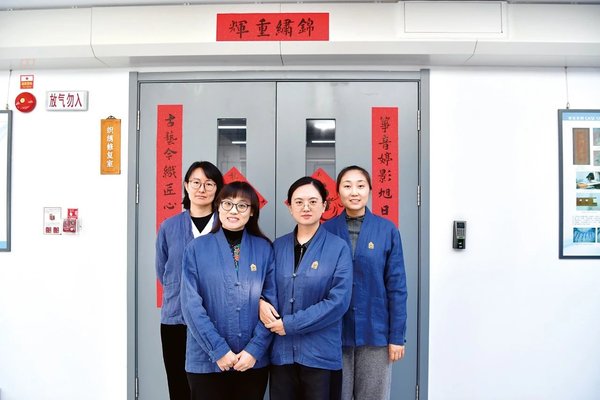
Enhancing the quality of restoration requires restorers' sustained effort.
The restorers must concentrate fully on their work. When they need a rest, some will walk through the museum. Others enjoy chatting with each other during their lunch break.
There is a Chinese couplet on the gate of the embroidery team's studio. The members like it, because it includes the names of each of the four members.
The restorers' work is extraordinary; all of their efforts show respect for history, and contribute to the inheritance of culture.
Photos by Zhang Jiamin
(Women of China English Monthly March 2025)
Editor: Wang Shasha
Please understand that womenofchina.cn,a non-profit, information-communication website, cannot reach every writer before using articles and images. For copyright issues, please contact us by emailing: website@womenofchina.cn. The articles published and opinions expressed on this website represent the opinions of writers and are not necessarily shared by womenofchina.cn.

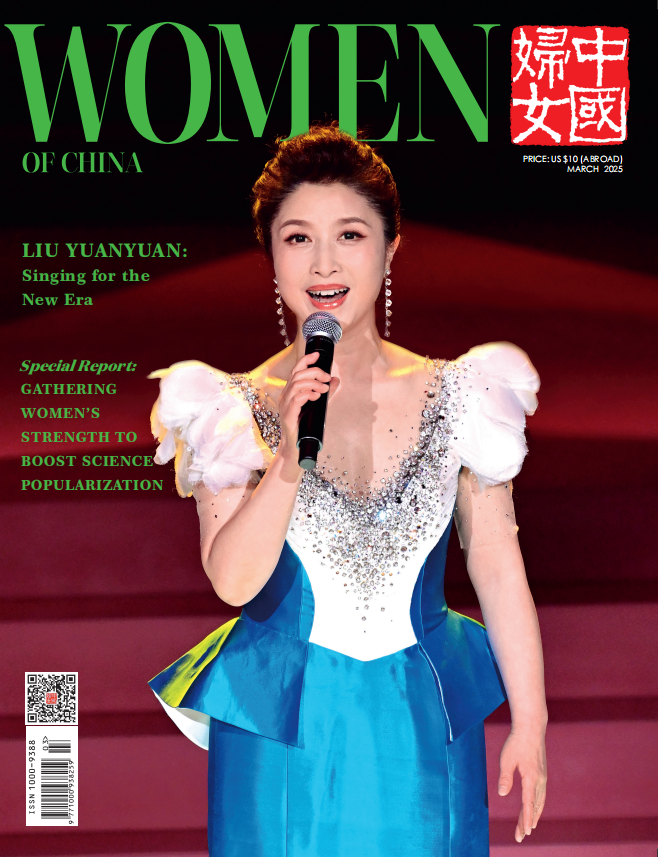





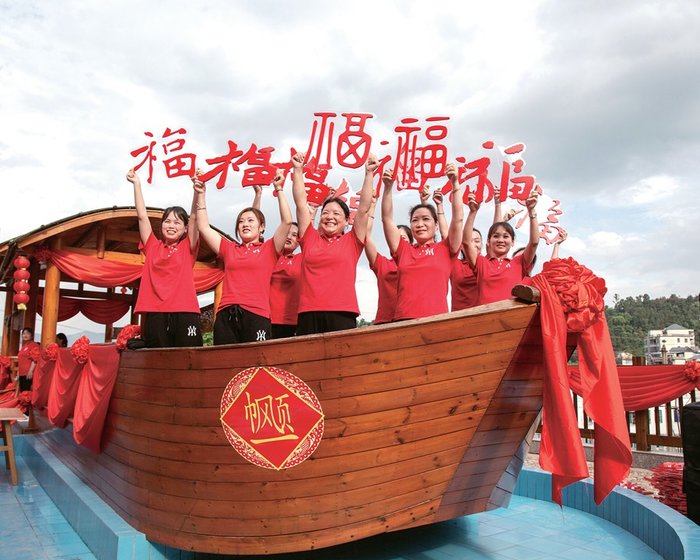
.jpg)

 WeChat
WeChat Weibo
Weibo 京公网安备 11010102004314号
京公网安备 11010102004314号